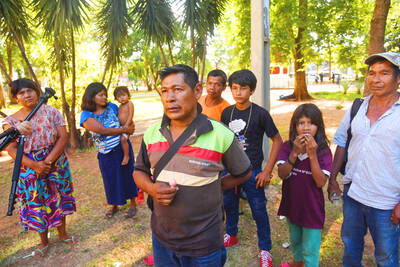Yageo Corp (國巨) plans to transfer NT$10 billion (US$332.37 million) from abroad to boost capacity and research and development (R&D) for high-end passive components used in automobile and industrial devices.
The move demonstrates Yageo’s commitment to increasing its investments in Taiwan, as the nation plays an important role in its manufacturing of niche products and R&D efforts, the Kaohsiung-based company said yesterday.
Yageo, the world’s third-largest passive components maker, generated about half of its total production and 90 percent of its R&D at its Kaohsiung operations and R&D center, it said in a statement.
“To meet growing demand from 5G technology and automotive electronics, the company has launched a series of investments in Taiwan in the past few years,” Yageo said.
The investments would “help the company fuel growth momentum in the long run.”
Passive components used in industrial devices and automobiles contributed 31 percent and 15 percent respectively to Yageo’s total revenue of NT$31.29 billion in the first three quarters of last year.
Last month, the company signed a letter of intent with the Southern Taiwan Science Park (南部科學園區) to build a new production line in Kaohsiung’s Ciaotou District (橋頭).
Yageo plans to hire 900 workers for the Ciaotou line and recruit 200 engineers to expand its R&D team, it has said.
The company earlier last year also secured a government loan of NT$16.5 billion to fund its domestic investment and acquired land in Kaohsiung’s industrial zone to build a new factory.
To solve supply constraints, Yageo said it has boosted its equipment utilization rate for multilayer ceramic capacitor and chip resistors to about 50 percent, from as low as 25 percent in October last year.
However, labor shortages in China remain an obstacle to boosting utilization rate in the short term, the company said.
Separately, Yageo’s board of directors has approved offering 80 million new common shares in the form of global depositary receipts (GDRs), as the company aims to raise funds to replenish operating capital, repay debts and purchase raw materials, according to a regulatory filing on Tuesday.
The GDR offering is to boost the firm’s share capital to 509.05 million shares from 429.05 million, but would dilute its earnings per share by 18 percent, the company said.

SELL-OFF: Investors expect tariff-driven volatility as the local boarse reopens today, while analysts say government support and solid fundamentals would steady sentiment Local investors are bracing for a sharp market downturn today as the nation’s financial markets resume trading following a two-day closure for national holidays before the weekend, with sentiment rattled by US President Donald Trump’s sweeping tariff announcement. Trump’s unveiling of new “reciprocal tariffs” on Wednesday triggered a sell-off in global markets, with the FTSE Taiwan Index Futures — a benchmark for Taiwanese equities traded in Singapore — tumbling 9.2 percent over the past two sessions. Meanwhile, the American depositary receipts (ADRs) of Taiwan Semiconductor Manufacturing Co (TSMC, 台積電), the most heavily weighted stock on the TAIEX, plunged 13.8 percent in

A wave of stop-loss selling and panic selling hit Taiwan's stock market at its opening today, with the weighted index plunging 2,086 points — a drop of more than 9.7 percent — marking the largest intraday point and percentage loss on record. The index bottomed out at 19,212.02, while futures were locked limit-down, with more than 1,000 stocks hitting their daily drop limit. Three heavyweight stocks — Taiwan Semiconductor Manufacturing Co (TSMC, 台積電), Hon Hai Precision Industry Co (Foxconn, 鴻海精密) and MediaTek (聯發科) — hit their limit-down prices as soon as the market opened, falling to NT$848 (US$25.54), NT$138.5 and NT$1,295 respectively. TSMC's

ASML Holding NV, the sole producer of the most advanced machines used in semiconductor manufacturing, said geopolitical tensions are harming innovation a day after US President Donald Trump levied massive tariffs that promise to disrupt trade flows across the entire world. “Our industry has been built basically on the ability of people to work together, to innovate together,” ASML chief executive officer Christophe Fouquet said in a recorded message at a Thursday industry event in the Netherlands. Export controls and increasing geopolitical tensions challenge that collaboration, he said, without specifically addressing the new US tariffs. Tech executives in the EU, which is

In a small town in Paraguay, a showdown is brewing between traditional producers of yerba mate, a bitter herbal tea popular across South America, and miners of a shinier treasure: gold. A rush for the precious metal is pitting mate growers and indigenous groups against the expanding operations of small-scale miners who, until recently, were their neighbors, not nemeses. “They [the miners] have destroyed everything... The canals, springs, swamps,” said Vidal Britez, president of the Yerba Mate Producers’ Association of the town of Paso Yobai, about 210km east of capital Asuncion. “You can see the pollution from the dead fish.